
Crochet fans rightly consider Irish lace as one of the most perfect techniques. By the complexity of the performance, this ancient knitting technique can easily be raised to the level of art. Small, openwork elements, smooth and voluminous motifs, collected in amazing patterns, all kinds of textures and colors make it possible to create simply a unique lacy fabric that can not leave anyone indifferent.
- Knitting techniques
- Motifs and patterns
- Creation of lace element
Knitting technique
Classic elements of Irish lace:
- plain leaf,
- round sheet,
- sheet with central streak,
- sheet with openwork window,
- thick shamrock,
- rose withthree rows of voluminous petals,
- a bunch of grapes.
When working with elements of Irish lace, it is common to use a sequential knitting technique. First, knit individual motifs( patterns), then they are laid out on a sketch or pattern, and are joined together by a grid or bridges.
There are several options for joining lace motifs. The most popular is the connection of motifs by a grid. It is quite simple: the finished elements are laid out on the diagram, and the space between them is tied with a grid.
Sometimes, when combining motifs of different sizes, "voids" of various shapes can be formed that can not be filled with regular mesh grids( sirloin or mesh net), in this case resort to the use of an irregular mesh that flows smoothly around the elements.
It is also possible to reverse the collection of lace. First, knit an openwork cloth or base from the net, and then the motives are attached to it. Also as a basis, you can take an ordinary tulle and sew on it elements.
In addition, lace motifs can be assembled sequentially, tying them to each other during operation. Most often, small items of homogeneous elements are assembled because it is quite difficult to assemble a whole canvas.
But you can sew an openwork cloth if you take tightly fitting motifs and sew them with a needle and long enough not tucked ends of the motifs.
Also when collecting products from Irish lace, brides can perfectly help out - stitches made of yarns trimmed with a "Richelieu" seam.
to contents ^Motifs and circuits
When working in the technique of Irish lace, the schemes, as such, are necessary only for copying of author's works, because the technique is largely free and does not require strict frames.
Use the below examples of motives and schemes for creating your own author's works.
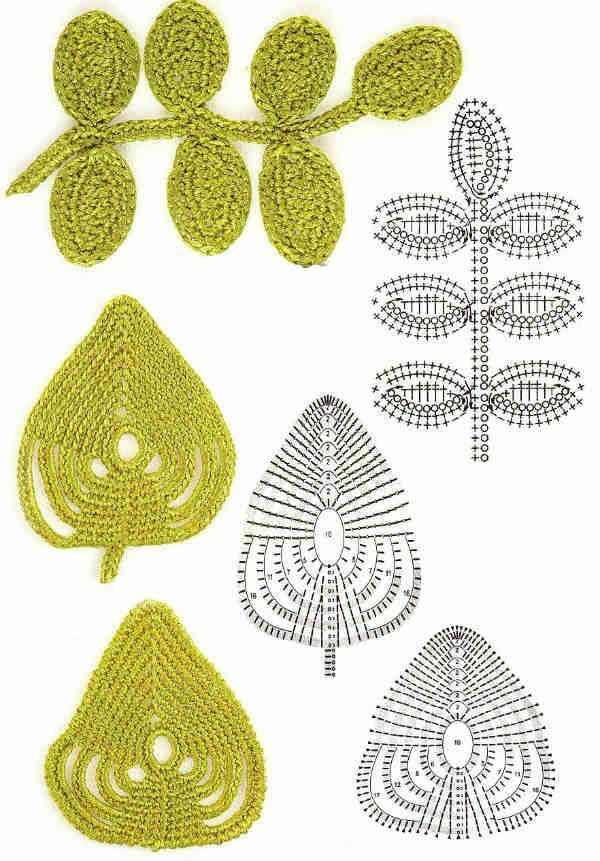
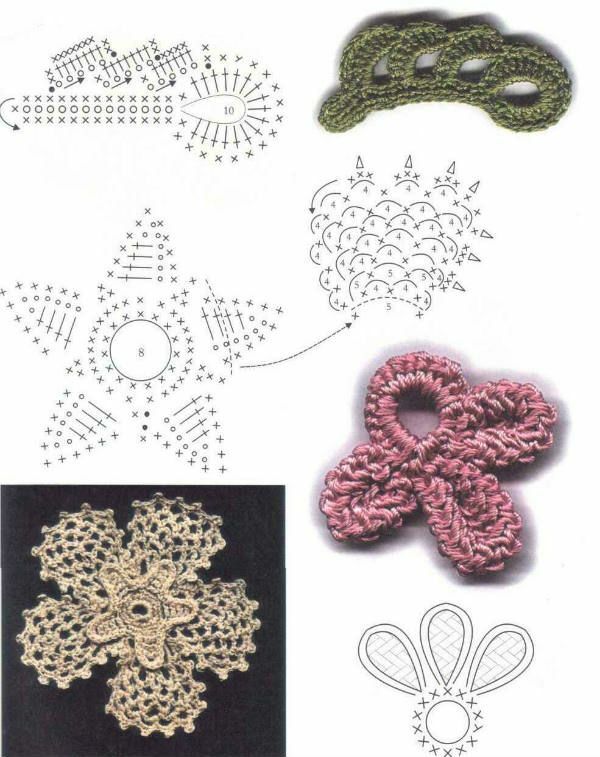
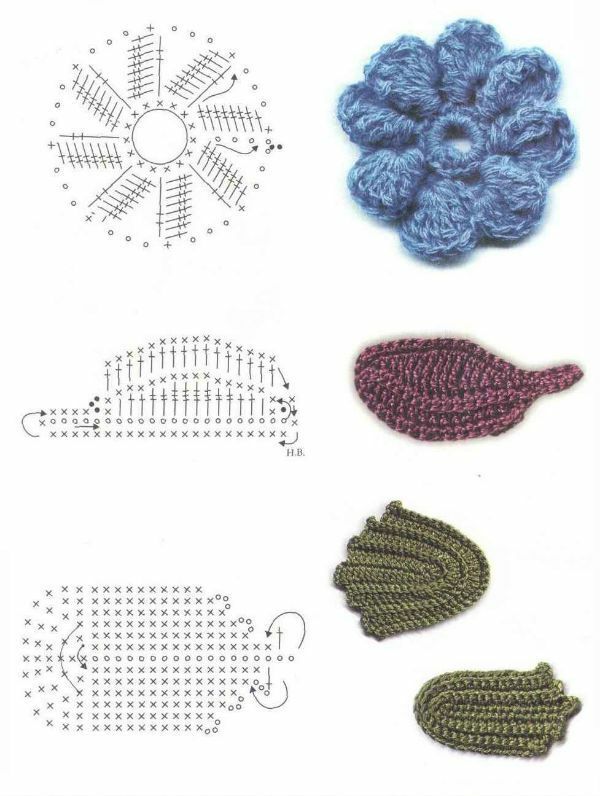
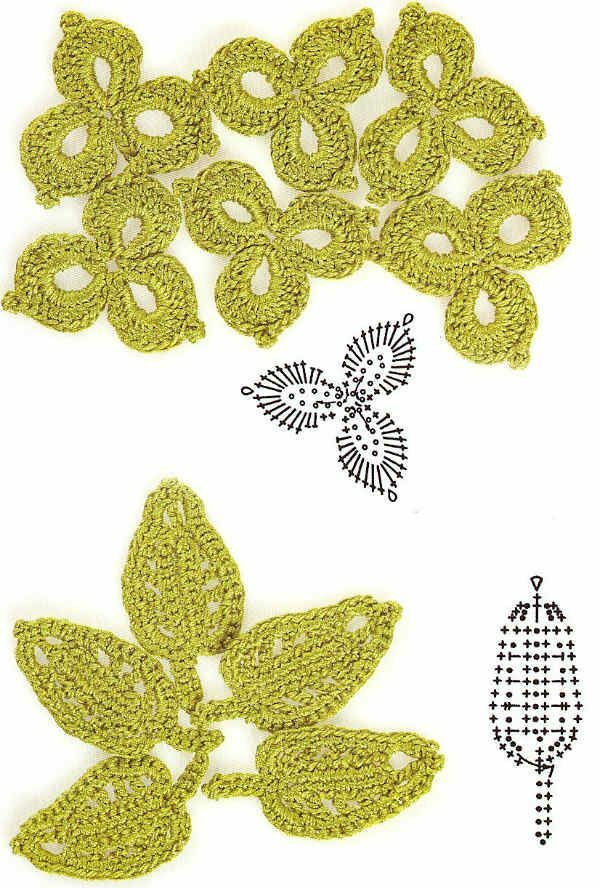
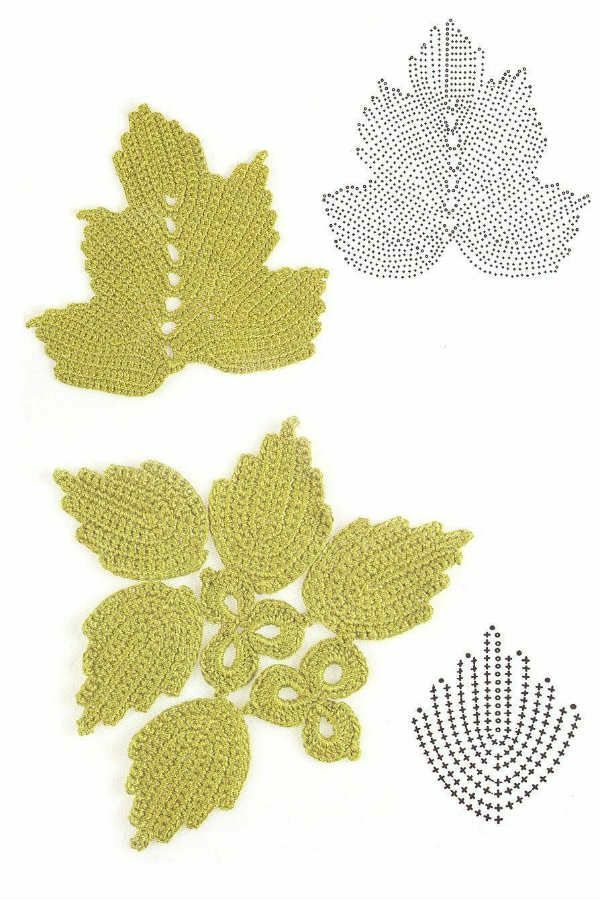
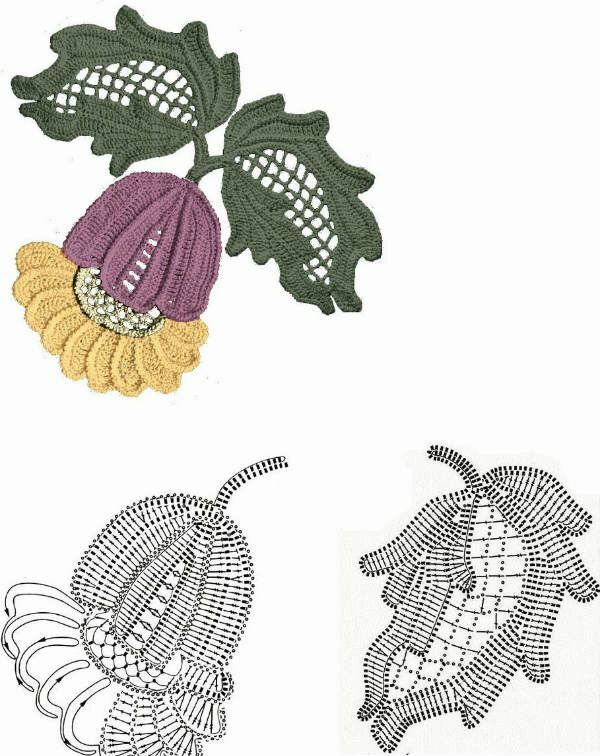
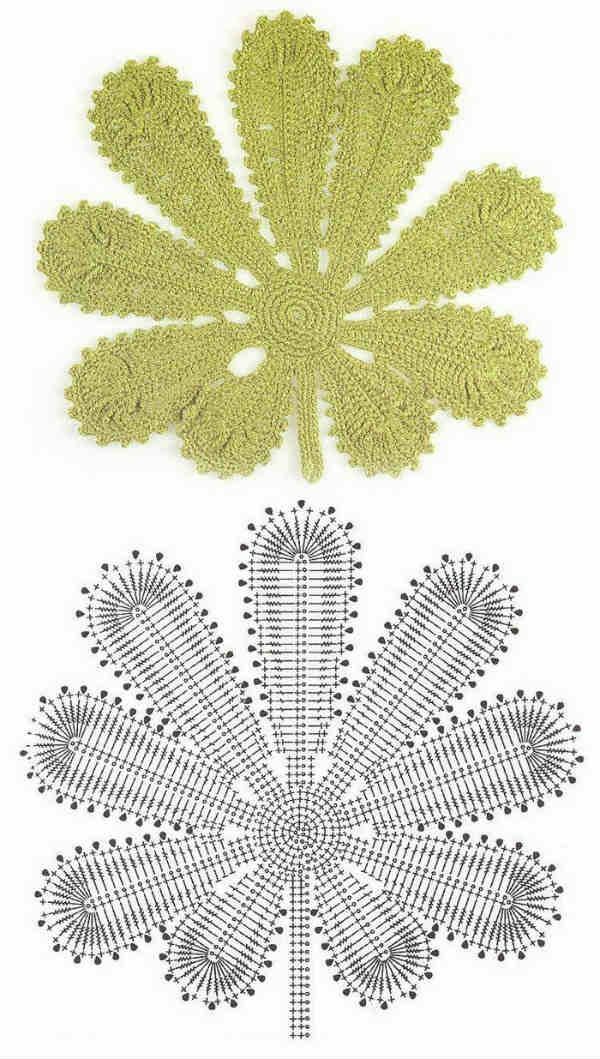

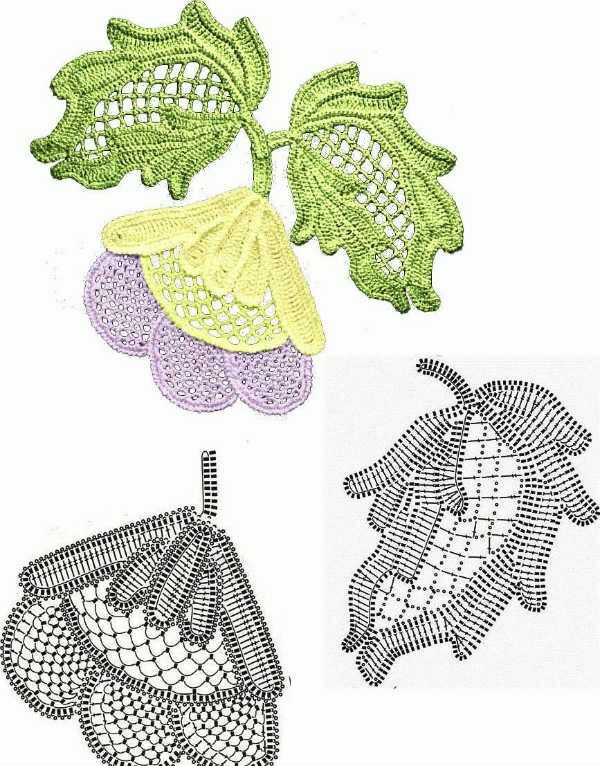
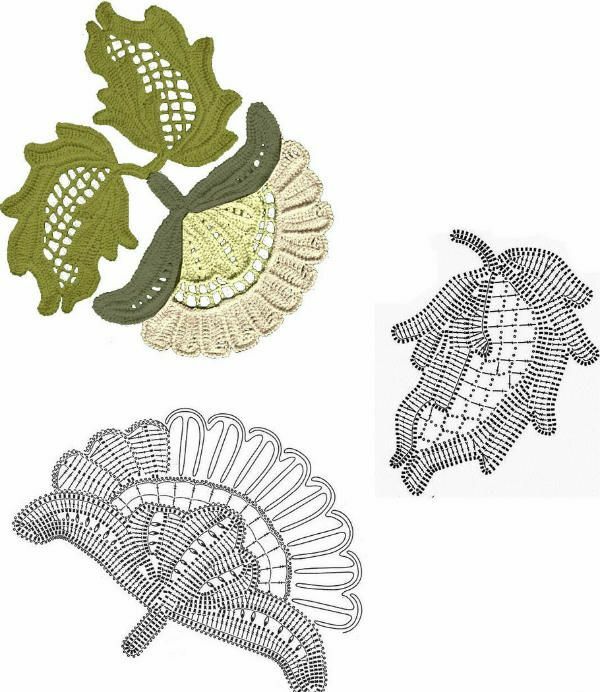
Creating a lace element
You will need a crochet hook and white threads of suitable thickness to work.
In the process of work we will use abbreviations:
- вп - air loop;
- p / p - half loop;
- st.s / n - a column with a crochet;
- st.b / n - a column without a crochet.
First, we create the basis for the ring motif. To do this, wrap the thread in several turns around the finger.
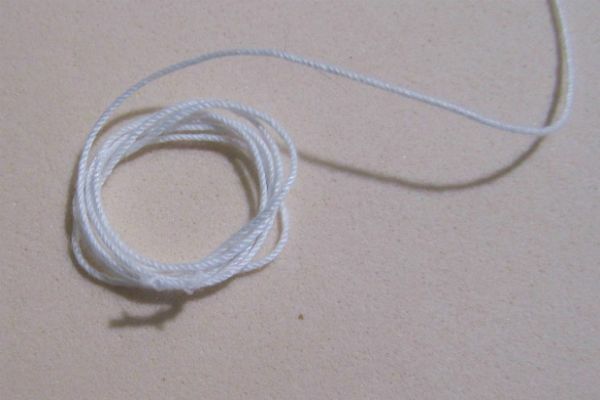
The resulting ring of threads should be tied with bars without a crochet. Then, form a 1 st lift and continue typing st.b / n. Your task is to place in the ring 35 st.b / n.
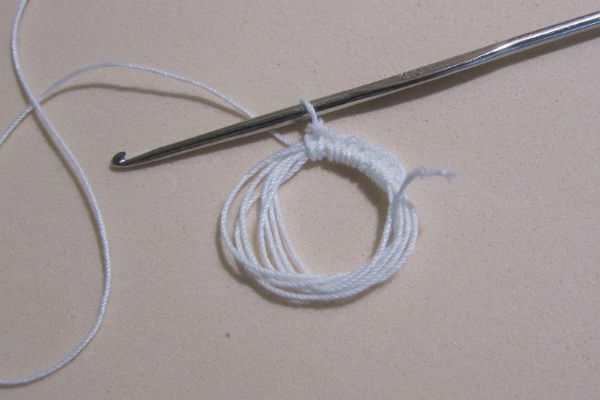
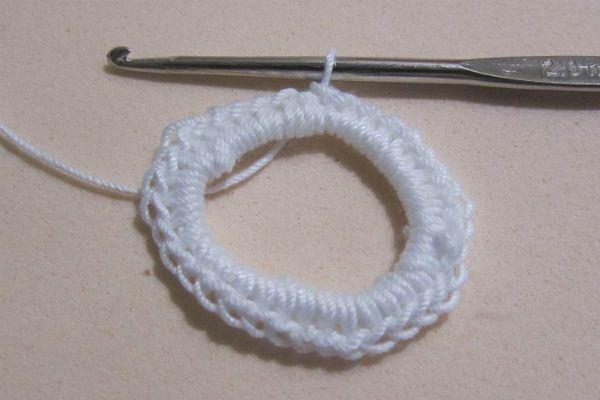

Next, grabbing the front half loops, tie a number of st.b / n "rachim step."
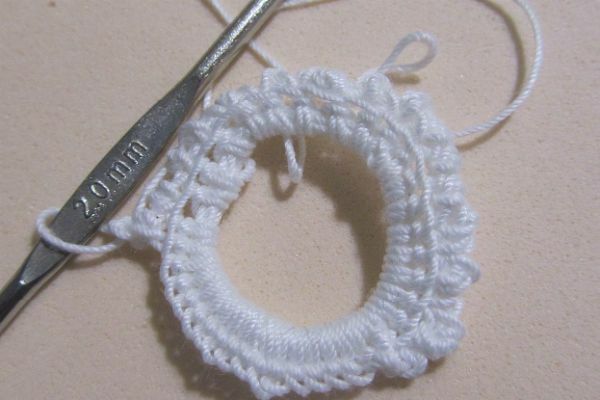
Please note, on the underside of the product, the characteristic free p / n should remain. From them, and the next series will begin.
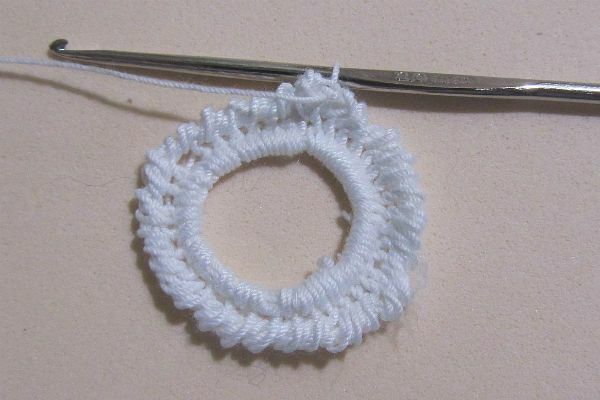
Check with photos. It should look like the photo. Form a chain of 5 in.
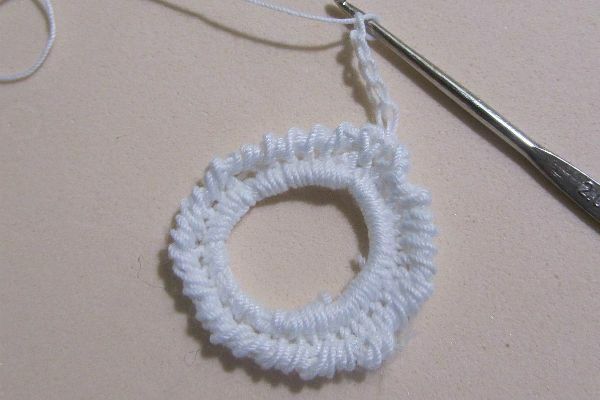
Attach this chain to the ring for free p / n to the 3rd st.b / n account. You will get a kind of arch.
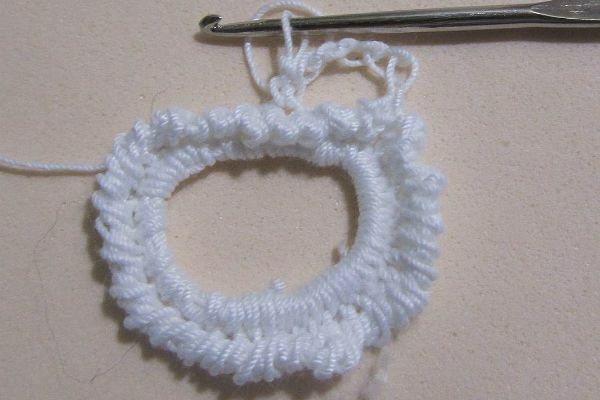
Similarly, connect four more of the same arches. In the last, sixth arch, dial only 3 in and attach it to the ring st.s / n.
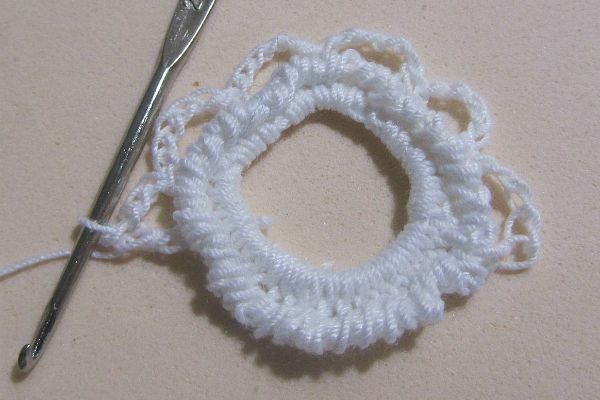
Expand the knitting and, on the already connected arches, make four more arches for 5 in, and the extreme arch of 3 in and 1 st.s / n.

At the next level, again, make six arches. To do this, the first chain of 5 bp is fixed in the extreme arch of the previous row.
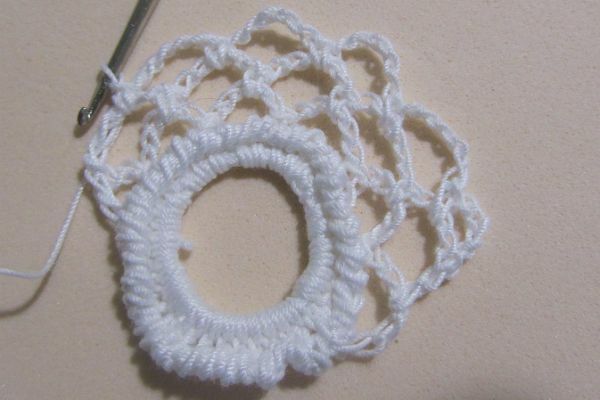
After it, you can tie another four arches to 5 in.
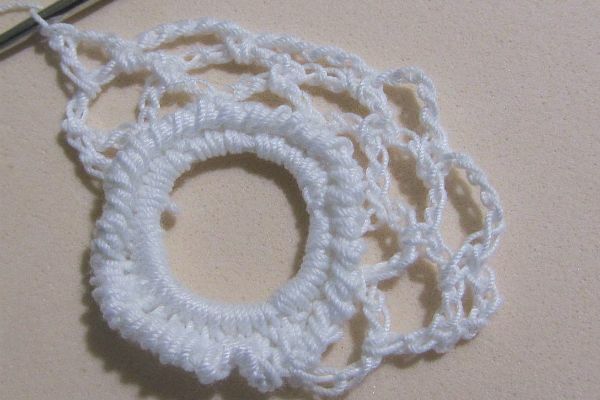
The sixth arch is made from 2 in and 1 st.s / n.
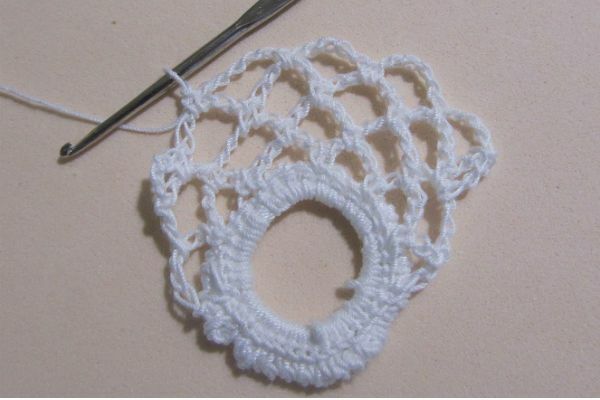
At the fourth level, you need to associate 5 arches again. Extreme will be from 2 in and st.s / n.
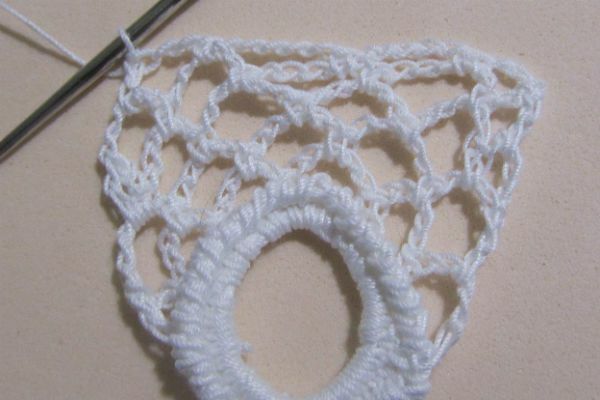
Fifth level. The first arch - 3 in. The next two arches are 5 vp and the extreme arch is from 2 to st and st.s / n.
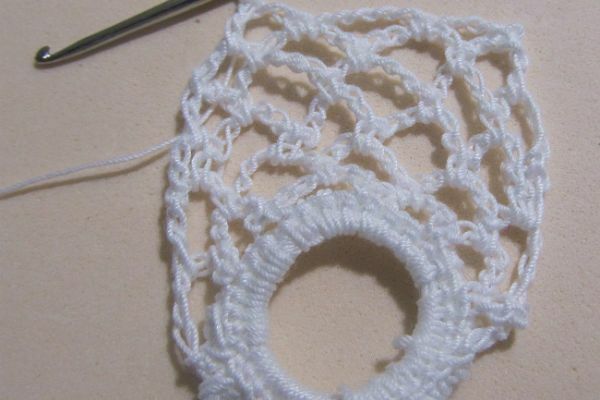
The sixth level. The first arch - 4 vp, the second - 5 vp, the third - 1 vp and st.s / n.
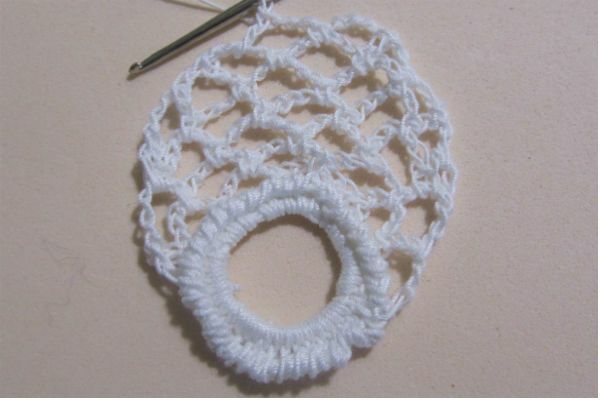
The seventh level. The first arch is 5 vp, and the second - 2 vp and st.s / n.
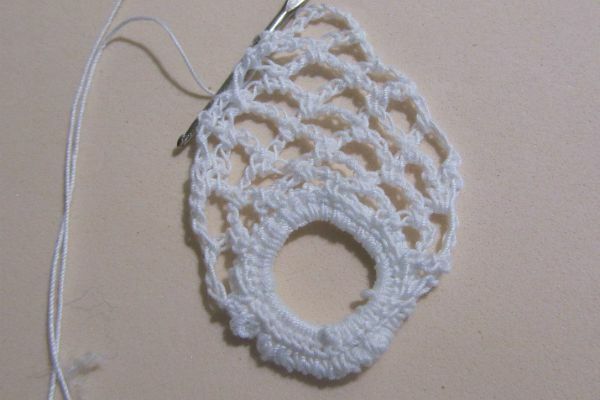
The eighth level. The central part of the motif is finished with an arch of 10 vp and cut the thread.
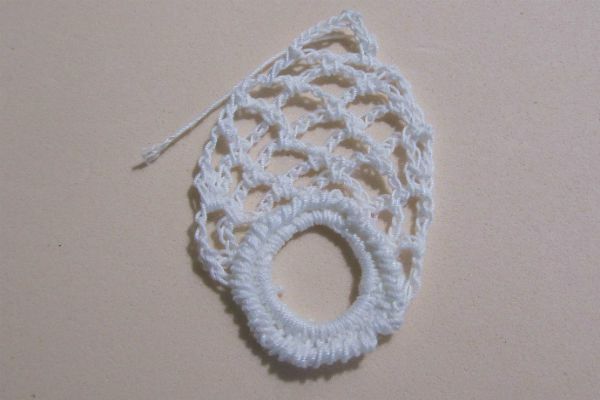
Take a new thread and make 1 inch for lifting, attaching it to the bottom of the very first arch of the 5 th.
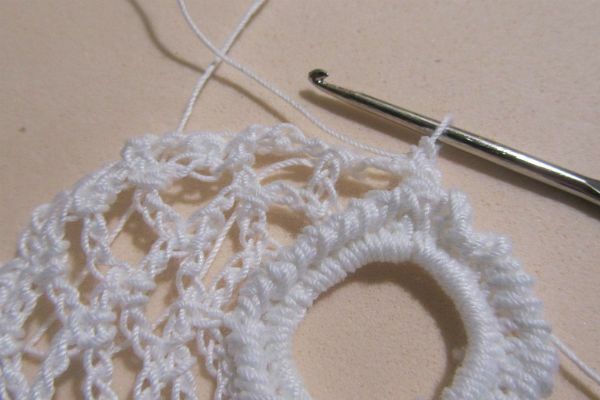
Then tie all the outer arches with columns without a crochet. At the highest point of the arch of 10 vp between the columns, you need to make 1 in. To make it more understandable to bind this scheme: 31 st.b / n, 1 in, 32 st.b / n. Count on one side of the ascent, as the first st.b / n.
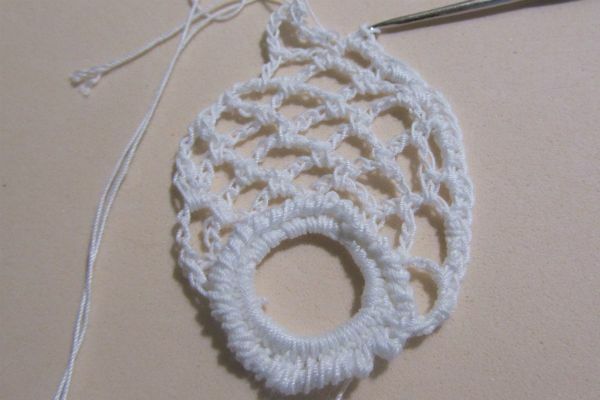
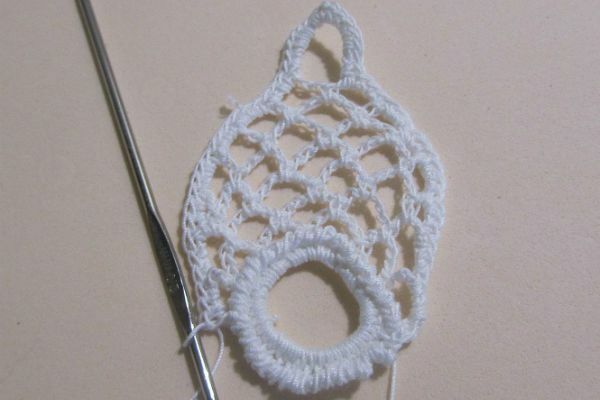
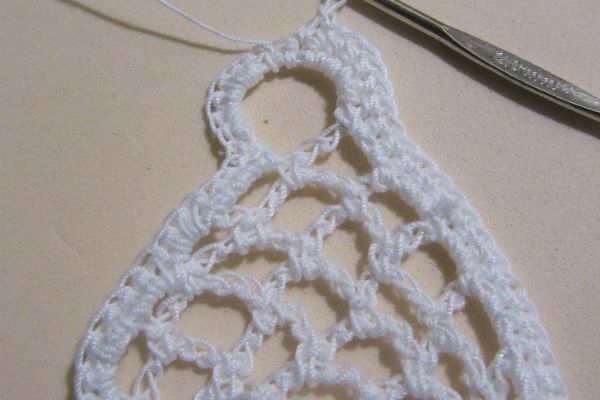
Now go to the ring. It should be tied for p / n on the reverse side, returning to the attachment of the second thread.
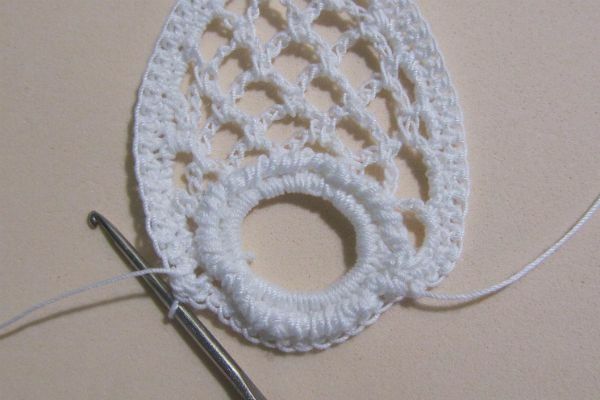
st.b / n pass the whole next row. Only through the left in the top point of the element will need to tie 3 st.b / n, thereby making an increase.
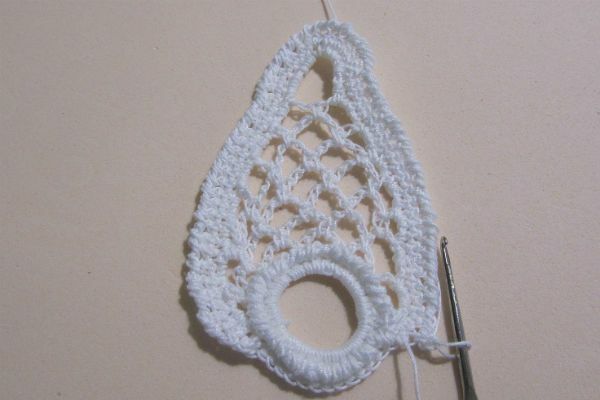
When you reach the edge of the grid opposite to the attachment of the second thread, you should start knitting back with a "stepping step".
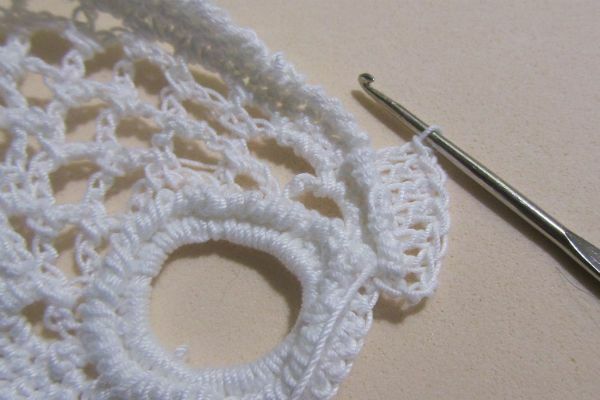
"Rachy step", knit the front half loops to the thread attachment point.
When there are 7 loops left up to the crown, form a 3-fold rise, and tie 26 st.s./n. The top of the head is the eighth loop.
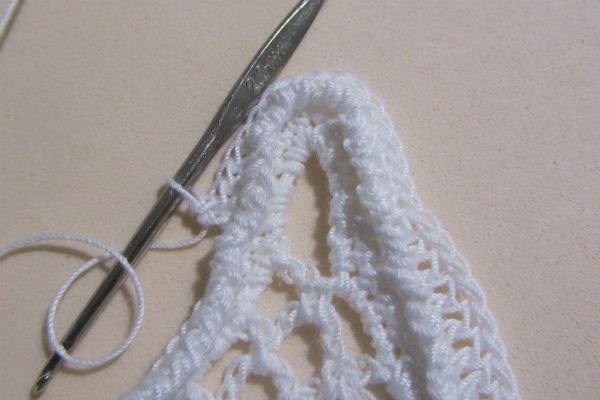
In each loop, connect 6 st.b / n, then in one loop 2 st.b / n.1 st.b / n and symmetrically in the other direction - 2 st.b / n from one loop, 6 st.b / n.
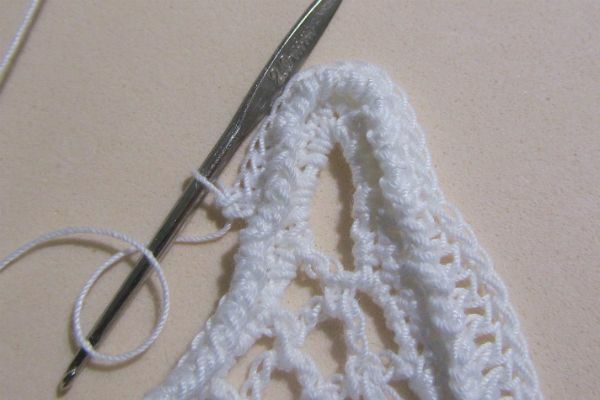
Then go through 28 st.s / n.
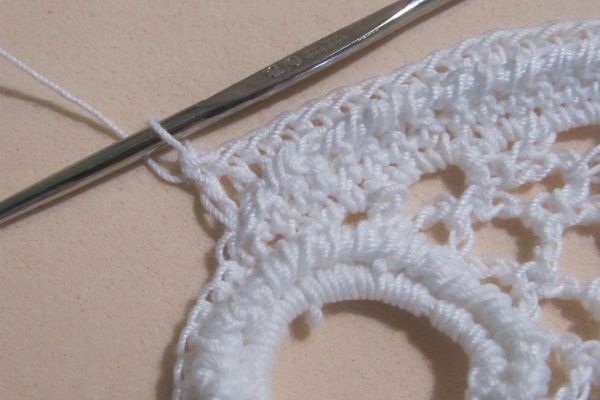
Now you can proceed to the strapping of the ring. To do this, form 2 st.s / n from one loop.
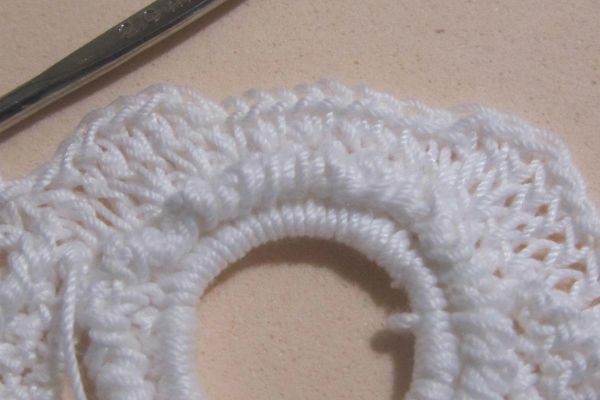
2 st.s / n from each loop of the previous row, 9 st.b / n from each loop, 2 st.s / n, 2 st.s./n from one loop. And eventually connect everything with the beginning of the series.
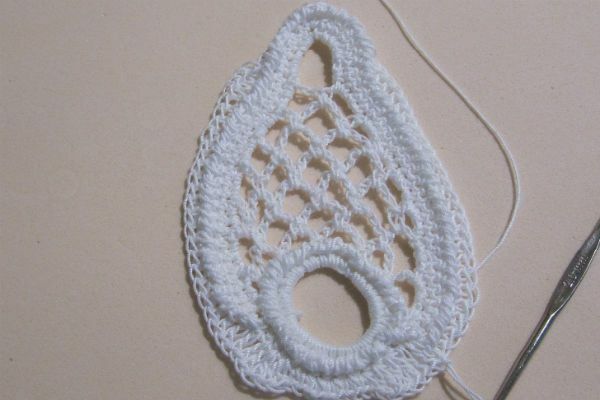
Tie a whole series of "walking steps" and cut the thread.
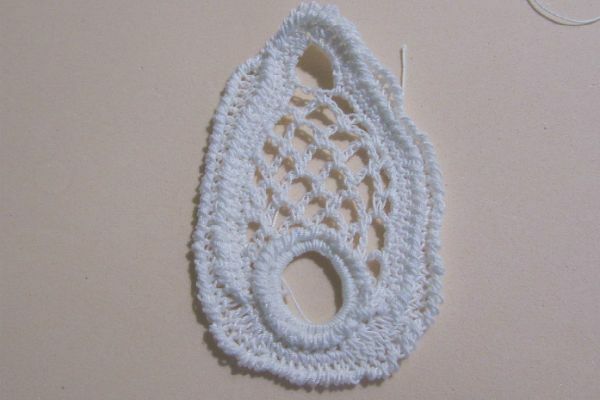
Take a new thread and, not counting the bar from the b, attach it to the 7th column of the previous row and make 1 st lift.
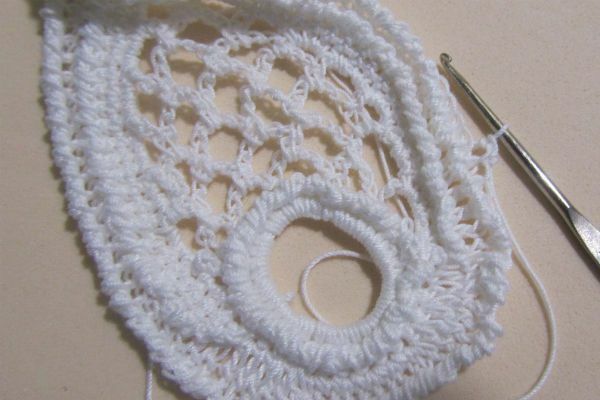
Make sure you have four st.b / n.
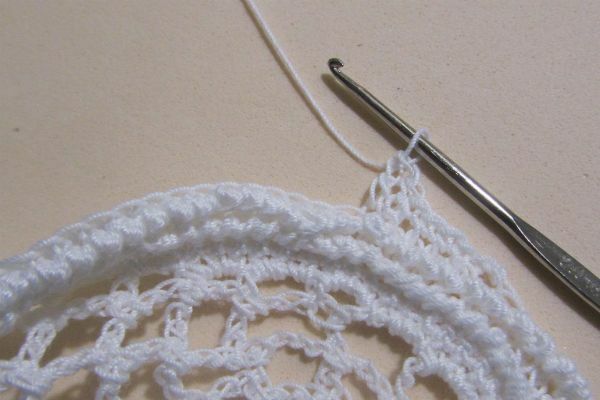
From the sixth column of 2 st.s / n.
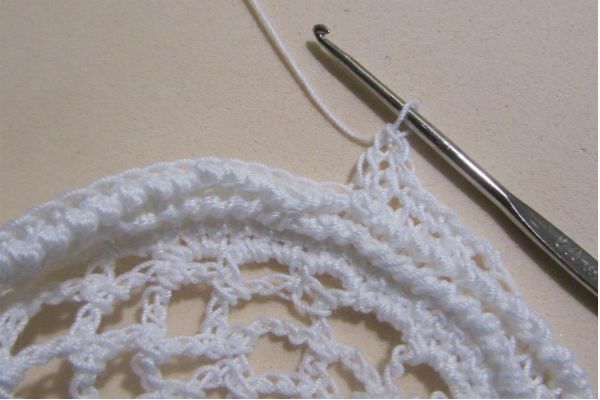
After the next 20 st.s./c.
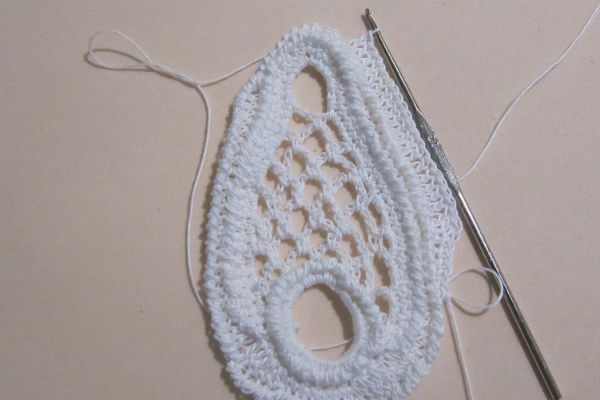
At the top of the element, connect 5 st.b / n and then symmetrically 20 st.s / n, 2 st.s / n from 1 loop, 5 st.b.n. Now turn the knitting, as in the case of the arches, this will be the only inferior row in the pattern.
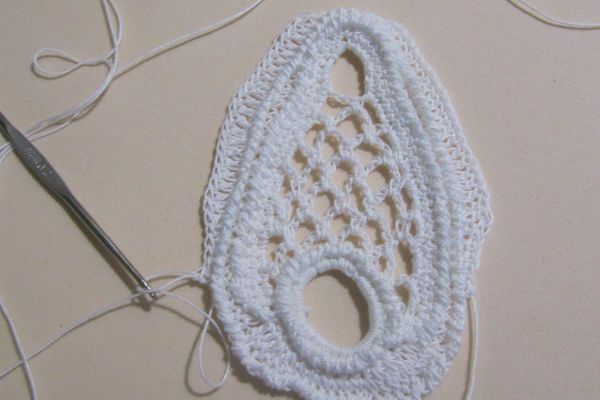
Do 1 st lift, after it 2 st.b / n, 6 st.s / n, 2 st.s / n from 1 loop.
Then 15 st.s / in, 2 st.s./n from one loop.
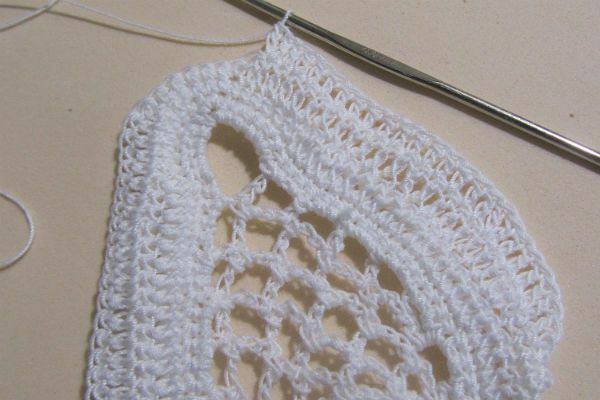
1 st.s / n, 5 st.b / n should be obtained over similar columns of the previous row.
Similarly, tie up the second half of the product - 1 st.s / n, 2 st.s / n from one hinge, 15 st.s / n, 2 st.s./n from one hinge, 6 st.s./n,3 st.b / n.
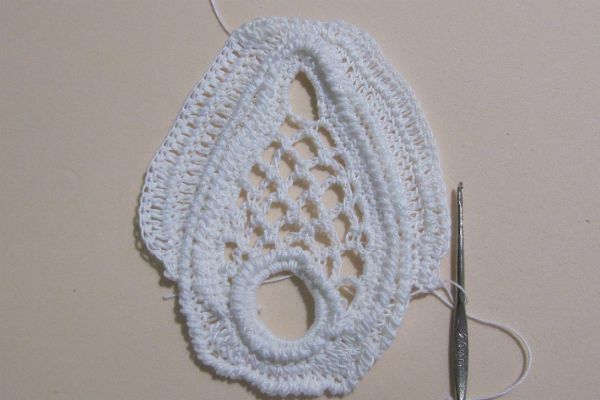
Along the perimeter of the ring, bind the st.b / n and return to the beginning of the row.
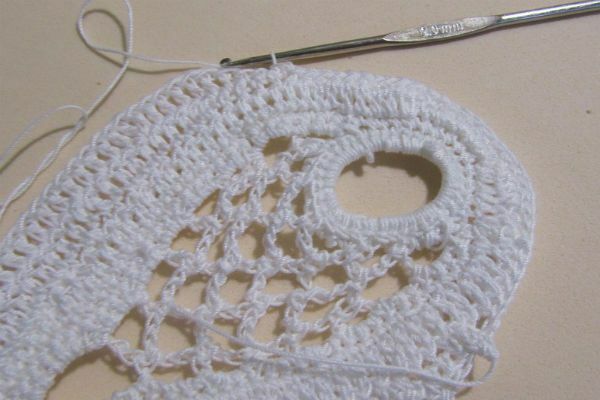
Again, go through the whole element with the "brisk step" and cut the edge of the thread.
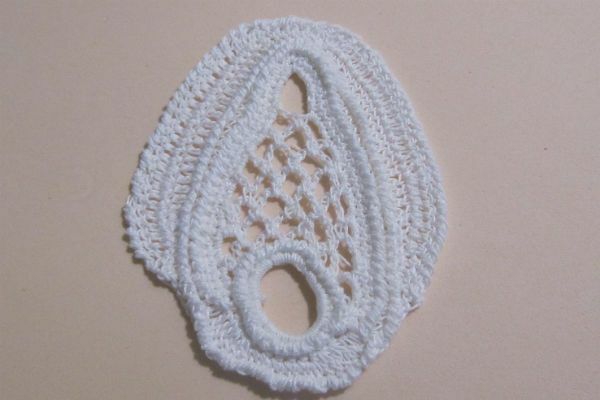
Attach a new thread to the first st.b / n of the penultimate row of the strapping, except for the row from the "step of the crook".

From the 10th form a large loop.
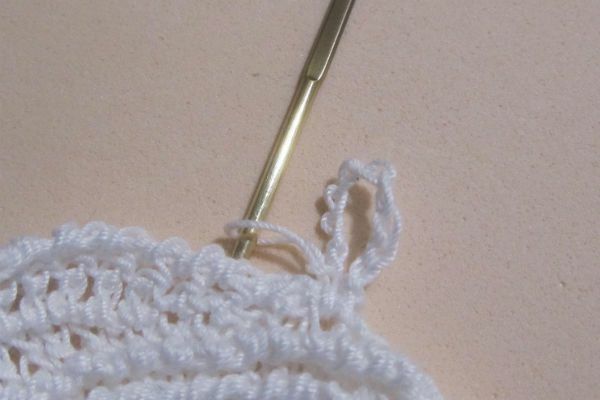
Tie this loop 22 st.b / n. Turn the product over. Each initial and final column of strapping connect with the loops of the element, thereby combining them together.
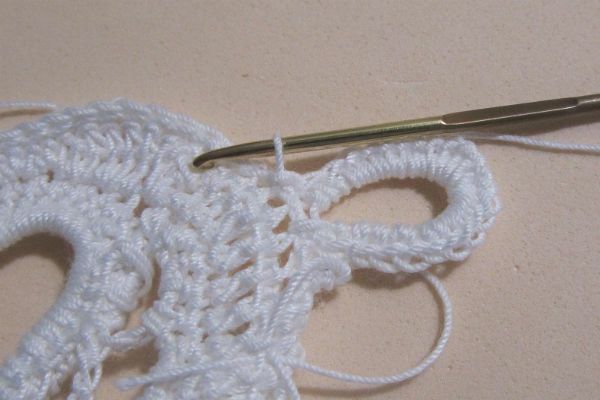
Turn the knitting around and re-tie the loop st.b / n.
In the element loop make one st.b / n. Tie the loop st.s / n.

Last row of strapping perform st.b / n. All four rows the number of bars in the harness should remain equal to 22.
For an element, go through 5 stb / n and form a second large loop of 10 inches. Tie her up by analogy with the first. After it, tie another 7 large loops around the entire element. To complete the knitting of the motive follows the strapping of the "ranch step".
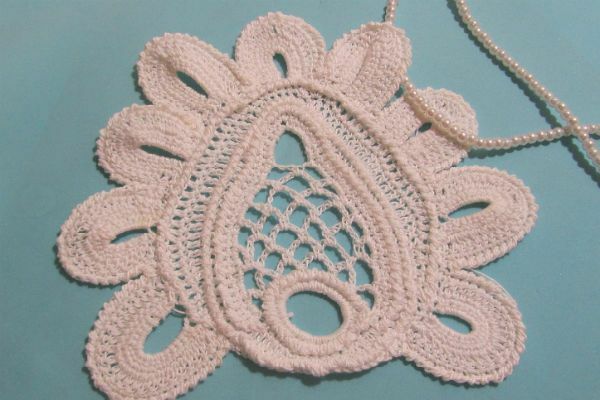
Many years I knit and it seemed not to surprise, thank you introduced to the new. Your site helped me a lot.

Excellent master class. Thank you so much.